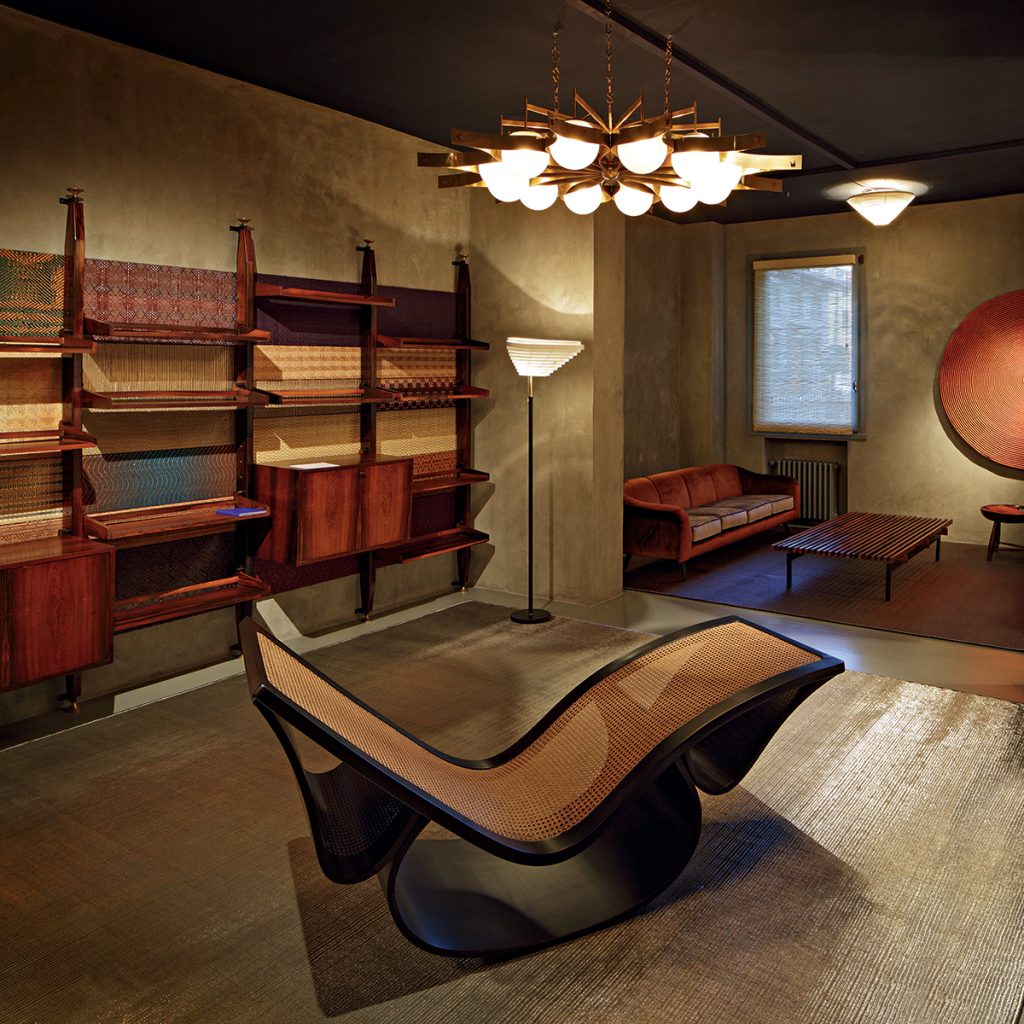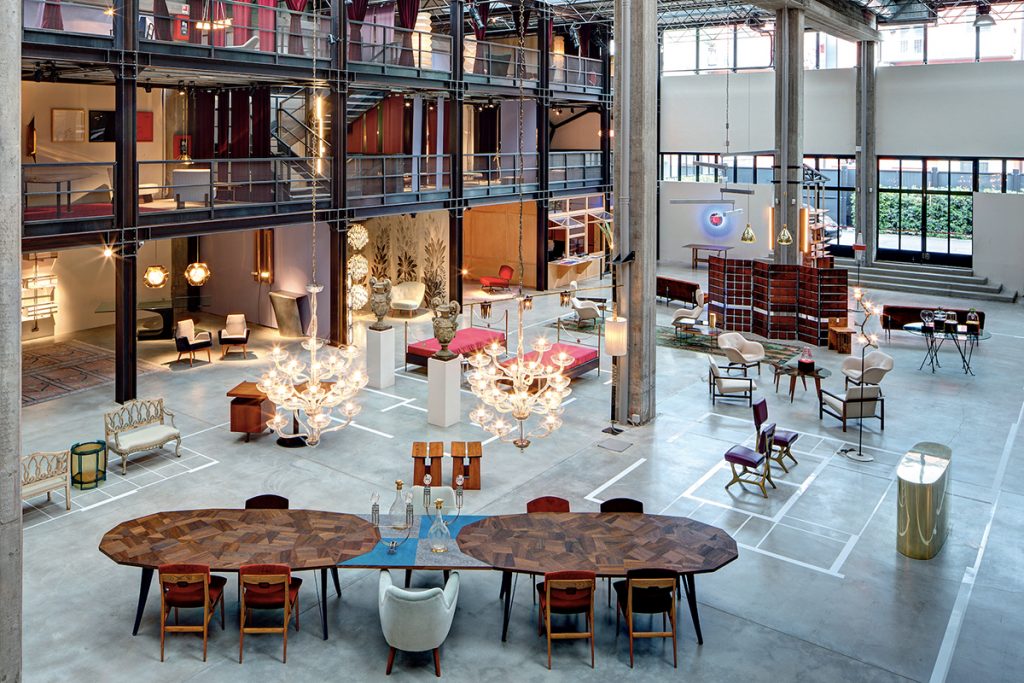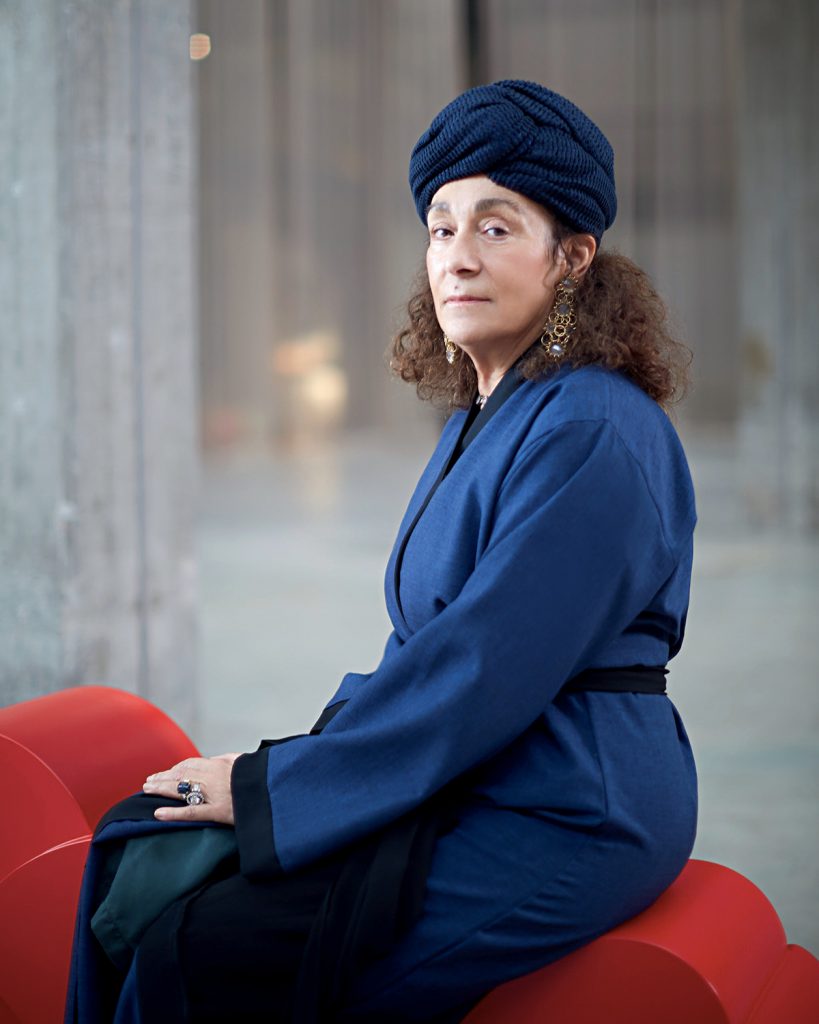Poised between art and design, but between different cultures as well, intersecting to breathe life into a new concept of style, Nina Yashar is a patron of beauty celebrating new talent on the international art scene.

In Nina Yashar’s hands, the specific language of each individual object transforms into a blazing arrow in the firmament of design. Her mind confronts different personalities, creating synergies that wander between epochs and geographies, in works conceived to be unique on both the Italian and international scene. We met this priestess of beauty in her own space, the Nilufar Depot, to get an insight into a life dedicated to architecture and design.
F1M From 1979 – 2020, almost five decades of research in the field of design. How do you see the balance now?
NY The balance is certainly very positive. In the gallery we’ve worked with more than 50 different artists and designers, produced extraordinary exhibitions and found emerging artists who’ve since become established themselves on the market. It’s an ongoing process I hope will continue for a long time to come.
F1M Various architects and designers came together for the first Nilufar exhibition dedicated to Pietro Consagra. Was this perhaps to do with the typological value of the architectural design, or a more specific choice for the exhibition.
NY The architectural design of the Depot, by Massimiliano Locatelli, is strong and rigorous but flexible at the same time: it can accommodate different exhibitions and different types of objects, embracing the various languages of art and design and enhancing them.
This is where precisely the strength of the space lies, expressive and welcoming at the same time, enhancing without imposing itself, and always managing to create a dialogue between the various objects on display.
For the Matacubi exhibition in particular, created in collaboration with the Pietro Consagra Archive and installed by Ruggero Moncada di Paternò, the objects are arranged to create a nucleus of works with rounded, sensual forms, laid out so as to attract two or three people to sit and establish a playful, direct and immediate involvement with the exhibits. This is also why we left ample breathing space between the objects, so visitors can experience the fullness and emptiness freely within the space.

F1M The concepts of history and memory make a decisive return in your choice of objects. How do these values become operational references for you in the design process?
NY That’s an interesting question, I personally find that it’s impossible to create a project in the present without giving due consideration to the past and its references.
I like to place objects and furnishings based on their aesthetic lines, I’m a scholar of beauty, so I give great credence to my design instinct. Then again, there are relations between certain production techniques and materials that can enhance furnishings extremely different to each other, in a totally spontaneous way.
My choice of design path always comes from a researched analysis of extremes. The extremes can be different periods, past, present and future for example, and the result I look for is always close to timelessness.
A great example of this is the Matacubi display at the entrance to the Depot, which is an expression of the past with a reference absolutely to the future in Odyssey by Andres Reisinger. I love taking seemingly impossible conversations to the extreme.
F1M When it comes to architecture and design, we always stress that these disciplines are primarily at the service of man to better shape the spaces of our life. This humanistic and even psychological nature is also linked to our need for beauty. How do these elements become guiding factors in the development of a design for Nilufar?
NY I think this question is very much linked with the previous one, in a certain sense I’m looking for the harmony between the objects able to satisfy the eye and make the space welcoming, but that completes the characteristics of certain objects at the same time. I like to relate furnishings, colours and materials from different worlds; like casual encounters that create unexpected surprises in the ongoing dialogue between beauty and function.
F1M In the city of the new millennium, can the value of the home-as-refuge, from the world and in the world, and the quality of its furnishings and interiors, still be identified as values recording the changes in our continuity?
NY I believe that now, even more than a few years ago, the value of home as a refuge has taken on a strong character. We’ve experienced the domestic space in a very intimate way, and demanded much more from that space, and that’s why we have to treat our environments with even more care and equip them with furnishings that make us feel safe and pampered in our world. This is always the case for a connoisseur of design, and I find it interesting how this need is shared by an increasingly wider public.
Most people used to see design just as the final touch for a space, an embellishment, but now I’m seeing an increasing trend towards investigating its history and origins, as if people now want to go deeper and increase their knowledge of the design world.

